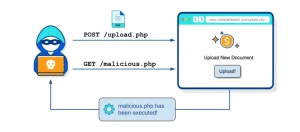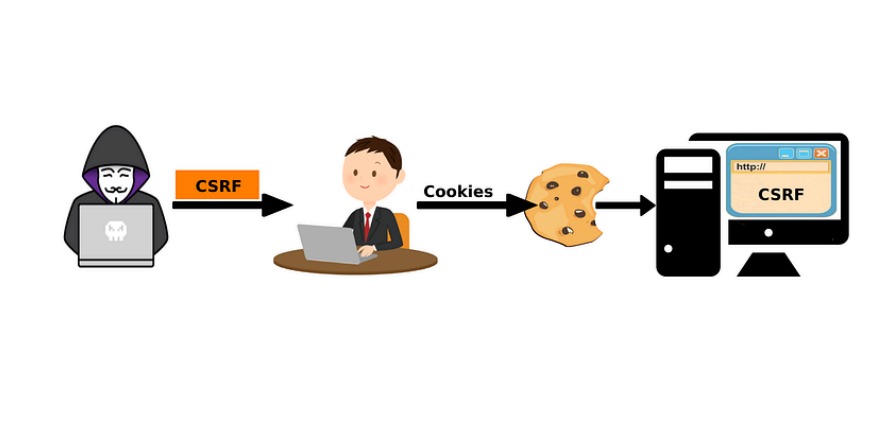A CSRF attack usually targets state-changing actions like deleting records, changing passwords, buying products, or sending messages. Hackers often use social engineering to send malicious links via email or chat. When the user clicks the link, the browser executes the attacker’s commands. For example, the attacker might transfer money or change the user’s email to block access.
How does Cross Site Request Forgery work? No unpredictable request parameters — the attacker can guess or know all the parameters the application expects from this type of request, like amount,accountNumber,user_id,…
A CSRF (Cross-Site Request Forgery) attack can use GET or POST requests. POST requests are usually more complex and less common. Using GET for sensitive actions like password changes or fund transfers may indicate a CSRF vulnerability.
The most important step in CSRF attacks is tricking the user into sending status change requests during login. In fact, the attacker’s goal is to force an authenticated user to send a malicious request to a web site or application without their knowledge. These requests can include cookies, URL parameters, and other types of data that appear normal to a user.
Another important point is the cookie policy. Developers should pay close attention to how cookies are configured, especially in applications with a weak SameSite setting. The SameSite attribute controls when and how cookies are sent in cross-site requests, which directly affects the application’s vulnerability to CSRF attacks.
Browsers typically store cookies automatically, and often without user intervention. If developers set SameSite=Strict, the browser blocks cookies from being sent in cross-site requests, which helps prevent CSRF attacks. On the other hand, if they configure SameSite=None, cookies are sent with all cross-site requests, making the application more vulnerable unless additional security measures like the Secure flag are also enabled. This makes your application vulnerable to CSRF attacks.
Attack Scenario
3–1 GET method: Imagine that your bank (bank.com) processes transfers using GET requests that contain several parameters (the identity of the recipient of the transfer and the amount of your transfer).
For example, if the user wants to send someone 100$, the request may be as follows:
http://bank.com/transfer?recipient=Atosa&amount=100Now, a very smart user might be persuaded to click on a link that looks like this (but shortened by URL or linked directly):
http://bank.com/transfer?recipient=Attacker&amount=100000That we use this example in real world:
<a href="https://example.com/transfer?amount=500&accountNumber=100852">Click
here to get more information</a>.2–3 POST method: If a bank only uses POST requests instead of GET requests, the other hyperlinks used in the GET example will not respond. Therefore, to have a CSRF attack, the hacker must create an HTML form.
The server authenticates the user using a cookie included in the POST request, which also contains the payment amount and the destination account.
The attacker must add a real cookie to his fake request to force the server to process the transfer. They can do this by using a seemingly harmless link to redirect the user to a new page similar to the one below.
<form action="https://example.com/email/change" method="POST">
<input type="hidden" name="email" value="hacker@email.com"/>
</form>
<script>
document.forms[0].submit
</script>Account information are set in the form above. When an authenticated user visits the page, the browser adds a session cookie before sending the request to the server. Finally, the server will change email easy.
3–3 PUT method: Using the PUT method and scenario rarely happens, but knowing this method does not harm.
Think for transfer money we have this request :
PUT http://bank.com/transfer.do HTTP/1.1
...
{ "acct":"user", "amount":100 }At the first we know to those request use json and have authenticate by cookie … and just need send fake request front user by XHR bad code or XmlHttpRequest :
<script>
function put() {
var x = new XMLHttpRequest();
x.open("PUT","http://bank.com/transfer.do",true);
x.setRequestHeader("Content-Type", "application/json");
x.send(JSON.stringify({"acct":"attacker", "amount":100}));
}
</script>
<body onload="put()">Note :
2-1 Content type: In content type we must have this headers for CSRF attack :
application/x-www-form-urlencoded
multipart/form-data
text/plainAlso in storage(inspect) part must see content type = none or lak and if see other too must delete that and test again.
2–2 CSRF Token:
- Reload site and check source of page and search about find CSRF token.
- Delete CSRF token
Multi Attack
- We can use CORS bug for arrive to CSRF bug !!
- We can use web cache bug for arrive CSRF bug too !!
- We can use Open-redirect bug for arrive CSRF bug too!!
- We can use XSS(Stored) bug for arrive CSRF bug too!!
Because the purpose of this article is for beginners and intermediate people, explaining complex examples is avoided and we only give examples about open redirect because it is easier to understand:

Open-redirect — CSRF
We have a site with this URL:
https://example.com/?redirect_to=https://example2.comWhen we find some parameter like ,redirect_to,URL,…, we can easily test the Open_Redirectpayloads and if there is Open_Redirect vulnerability, we can also try to reach the CSRF:
http://example.com/?redirect_to=https://vulnerable.com/panel/change_pass?


